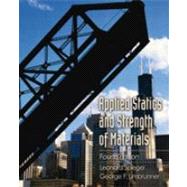
| Introduction | |
| Principles of Statics | |
| Resultants of Coplanar Force Systems | |
| Equilibrium of Coplanar Force Systems | |
| Analysis of Structures | |
| Friction | |
| Centroids and Centers of Gravity | |
| Area Moments of Inertia | |
| Stresses and Strains | |
| Properties of Materials | |
| Stress Considerations | |
| Torsion in Circular Sections | |
| Shear and Bending Moment in Beams | |
| Stresses in Beams | |
| Design of Beams | |
| Deflection of Beams | |
| Combined Stresses | |
| Columns | |
| Connections | |
| Pressure Vessels | |
| Statically Indeterminate Beams | |
| Appendices | |
| Notation | |
| Answers to Selected Problems | |
| Index | |
| Table of Contents provided by Publisher. All Rights Reserved. |
The New copy of this book will include any supplemental materials advertised. Please check the title of the book to determine if it should include any access cards, study guides, lab manuals, CDs, etc.
The Used, Rental and eBook copies of this book are not guaranteed to include any supplemental materials. Typically, only the book itself is included. This is true even if the title states it includes any access cards, study guides, lab manuals, CDs, etc.